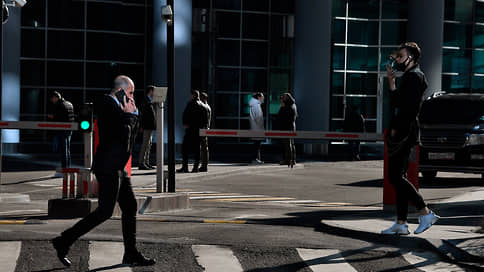The first rating of the development of creative industries in the regions of the Russian Federation has been compiled
[ad_1]

The Institute for Statistical Research and Economics of Knowledge (ISSEK) of the National Research University Higher School of Economics conducted the first experimental assessment of the level of development of creative industries in the regions of the Russian Federation. Based on a special index created by experts, four groups of regions with different scenarios for the development of the creative sector were identified: “leaders”, “evolutionary”, “effective” and “catching up”. The rating is topped by Moscow, St. Petersburg and the Novosibirsk region; the regions of the Far East and the North Caucasus are widely represented in the bottom third of the list.
ISSEK, together with the Center for Interdisciplinary Research of Human Potential, compiled a rating of the development of creative industries in Russian regions (available from Kommersant). We are talking about 16 areas of creative activity, including architecture, design, sound recording, photography, publishing, performing arts, IT and video games, cinema and animation, fashion, arts and crafts, advertising and PR, television and radio broadcasting.
To rank the subjects of the Russian Federation, the Russian Regional Creative Industries Index (RRCI) was developed. It is formed on the basis of indicators that include 48 indicators, grouped into 12 headings and distributed across four thematic sections (socio-economic conditions, cultural environment, economics of creative industries and their support). Based on the results of the assessment, the regions were divided into four groups (models of development of the creative sector): “leaders”, “evolutionary”, “effective” and “catching up”.
Experts classified 21 regions as “leaders”, the top three being Moscow, St. Petersburg and the Novosibirsk region.
“Leaders” are superior to other regions in most aspects and are most clearly distinguished by their developed economy of creative industries, ahead of other constituent entities of the Russian Federation in this indicator by an average of 2.4 times. They have more developed infrastructure support for the sector – 14 out of 19 regional institutions for the development of creative industries are concentrated in this group. More than a third of the representatives of this group have a million-plus city.
For the “evolutionary” and “effective” groups of regions, the value of the RRIKI index differs from the leaders by more than 60%, but less than 69%. The “evolutionary” group includes 19 regions (Mordovia tops the list) – despite the high potential, the results of the development of creative industries here are still below the average for the Russian Federation. The “effective” group includes 15 regions (led by the Voronezh region) – with moderate potential, the results of the development of creative industries here exceed the national average. Subjects of the Russian Federation from the “evolutionary” group more often use regional tax incentives and are more prone to strategic planning of a creative vector. At the same time, development institutions are represented in them four times less frequently than among the “leaders.” The “effective” group more actively uses mechanisms for protecting intellectual property: for example, in terms of the number of patent applications for inventions per 10 thousand people employed in the economy, they are ahead of the “evolutionary” group by an average of 32%.
The fourth group – “catching up” – is the largest, it includes 30 subjects of the Russian Federation.
They lag behind the Moscow index value by more than 69%. These regions are less urbanized, and the regions of the North Caucasus and the Far East are widely represented among them. There are no institutions for the development of creative industries here, and there are almost five times fewer creative clusters per region than the national average. The group is headed by Kalmykia, the Amur region closes the list.
The results obtained indicate the uneven development of creative industries in the regions, ISSEK notes. Three quarters of them lag behind Moscow in terms of RRICI value by more than 60%. It should be noted that the government aims to increase the share of the creative economy in GDP to 6% by 2030 from 2.4% in 2019, and the share of those employed in it from 4.7% to 15%. In the meantime, as previously reported by ISSEK, the indicators are far from desired – in 2022, the contribution of creative industries to the Russian GDP was 2.64%, and the share in the number of employed was 6.3% (see “Kommersant” dated October 9).
[ad_2]
Source link






